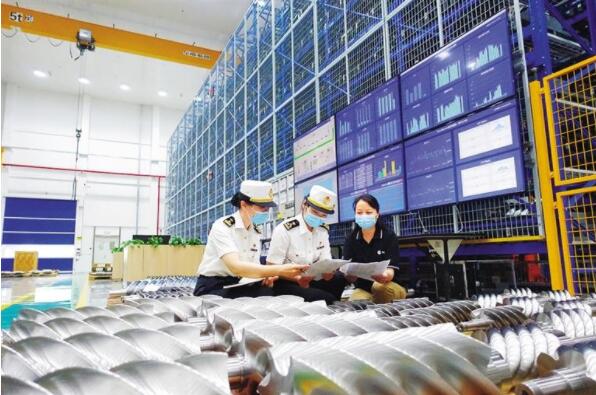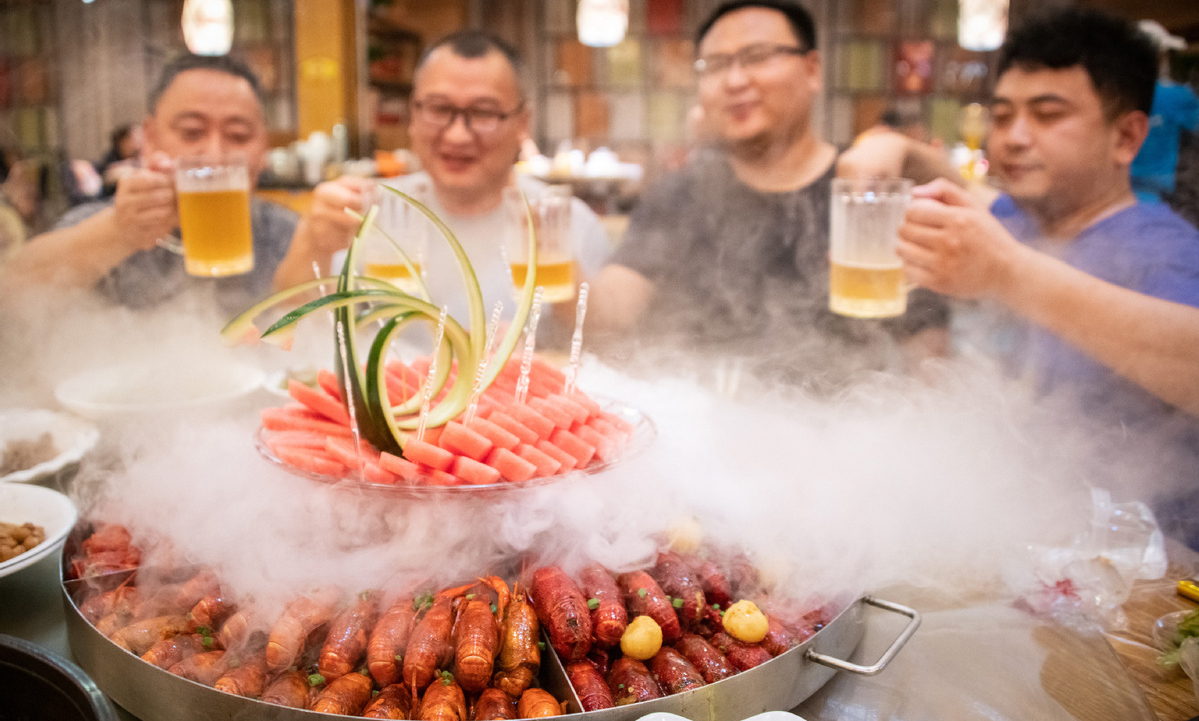RCEP delivers tangible benefits to signatory countries in first half-year after implementation

Customs officers in Taicang city, east China’s Jiangsu Province, help a local refrigeration company to acquire authorized economic operator (AEO) status for customs simplification purposes. The adoption of the streamlined customs system will help the company to open up the refrigeration equipment market abroad. (Photo/Yang Zehao)
It has been half a year since the Regional Comprehensive Economic Partnership (RCEP) agreement took effect. Over the past half a year, the agreement has demonstrated strong vitality against a backdrop of increasingly aggravated geopolitical conflicts, emerging challenges to the international order’s economic and trade rules, and sporadic waves of the COVID-19 pandemic.
The agreement has promoted economic interconnectivity throughout the Asia-Pacific region and has already delivered tangible benefits to foreign trade companies and consumers.
According to statistics compiled by the Beijing Customs District, in the first half of the year, 770 million yuan ($114.88 million) worth of imports and exports that it handled have directly benefited from the RCEP agreement, and exports worth 687 million yuan have enjoyed about 6.87 million yuan in tariff exemptions and related reductions in destination countries.
Wang Wei, deputy head of the duty collection department with the Beijing Customs District, said that Japan has become Beijing’s top export destination for the issuance of RCEP certificates of origin by value. So far, 1,602 RCEP certificates of origin have been issued to Japan for over $103.5 million worth of goods.
Chinatex International Apparel Co., Ltd., affiliated to Chinatex Corporation Limited, mainly exports business suits and shirts to Japan.
“The RCEP agreement has delivered huge benefits to our company. With the certificate of origin issued to our company, the tariff rate on our exports to Japan has been lowered from 10 percent to 8.2 percent. This has helped enhance the competitiveness of our products in the Japanese market,” said Duan Tao, general manager of the company.
The RCEP covers over 30 percent of the world’s population, economic output, and trade volume. The agreement has taken aim at eliminating tariffs on as much as 90 percent of goods traded between participating countries.
The Guangzhou Baiyun International Airport in Guangzhou, south China’s Guangdong Province, operates 23 international air routes between Guangzhou and other RCEP signatories. In the first half of the year, the airport handled over 100,000 tonnes of goods imported from other RCEP participating countries, a year-on-year increase of 49.8 percent.
According to statistics published by the Guangzhou Customs District, in the first half of the year, it received customs declarations for 2.91 billion yuan worth of imports, and granted 58.98 million yuan in tariff reductions on goods imported from foreign countries.
Photos
Related Stories
- RCEP keeps releasing dividends
- RCEP offers broader room for China-ROK cooperation: official
- China's Shenzhen sees trade grow with RCEP members
- RCEP expected to bolster China, ASEAN cooperation
- A look at the world's largest trade deal
- RCEP best example of open, inclusive, rules-based trading system: Cambodian PM
- China's Shandong sees trade growth with RCEP members
- China's Gansu reports trade growth with RCEP members
- Interview: RCEP, CCFTA inject new impetus into Cambodia-China trade, says Cambodian official
- Southeast Asian fruits ride RCEP wave to Chinese market
Copyright © 2022 People's Daily Online. All Rights Reserved.









